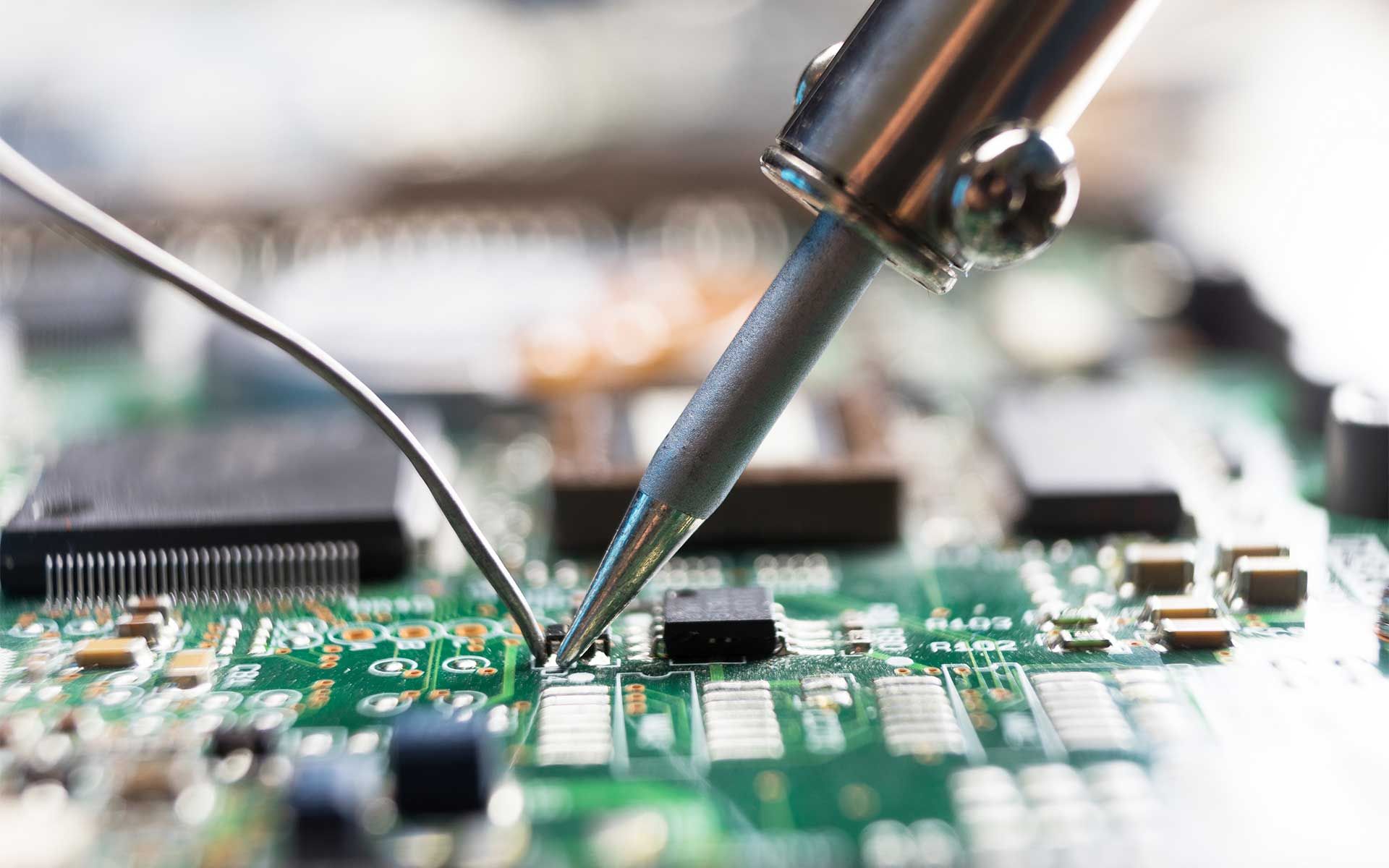As a leading stocking distributor of electrical components from top manufacturers and suppliers within various industries, we offer an extensive and diverse inventory of electrical parts for industrial electronics, medical, transportation, aerospace, alternative energy and many more industries - both nationally and internationally. However, what truly sets us apart from the competition is our wealth of value-added services.
We call this the Peerless Value-Added (VA) Experience, and it means large inventories for quick turnaround to exact specifications. Today’s post highlights soldering, one of the many above-and-beyond services customers enjoy as part of the Peerless Electronics advantage. We will discuss everything you need to know, including what soldering is, how it works, the different types, and much more.
What is Soldering?
Let’s begin with a basic soldering definition. The soldering meaning involves the process of joining different types of metals together with melted solder, a metal alloy. Unlike welding, soldering does not involve physically melting the pieces or components together. Rather, they are joined together using a filler metal with a low melting point that acts like an adhesive. This metal is known as solder, and it physically joins two components together.
How Does Soldering Work?


The soldering process begins with preparation, which involves donning protective gear and working in a well-ventilated space. Before beginning, the soldering tip should be cleaned prior to heating. This can be accomplished by wiping the iron tip down with a wet sponge, then coating it in a thin, even layer of solder. This is called "tinning," and it helps protect the tip from rust or oxidation. Finally, wipe away any excess solder from the tip using the wet sponge.
Once preparations are completed, the soldering process begins by heating the filler metal (solder) to a working temperature (typically around 600°F or beyond its melting point) with a temperature-controlled iron, i.e., a soldering iron or soldering gun.
Position the soldering iron at a 45-degree angle to the pieces being joined and heat them before applying the soldering metal. The components being joined must be hot enough for the solder to melt, which joins the pieces when the solder cools, i.e., creating a soldered joint. It’s important to remove the heated soldering tip first, followed by the solder wire.
Metal Used for Soldering
The most common questions we’re asked about soldering are these: what is solder made of? Also, which metal is used for soldering joints in electronics? Let’s begin with the first question. At one time, the filler metals used in soldering were lead-based (lead solder). However, RoHS (Restriction of Hazardous Substances) regulations increasingly require lead-based solders to be replaced with lead-free metal in solders, such as antimony, bismuth, brass, copper, indium, tin, or silver.
With electronics, the most commonly used solder is an all-purpose, lead-free version made from tin, copper, and silver. This type is suitable for various electronics projects, as it can withstand temperatures up to 500°F (260°C) without overheating, thus reducing the chance of damage to components. When selecting a solder, it is essential to read the instructions carefully and match the solder type to the application's needs.
Flux Used for Soldering
What is flux used for in soldering? For starters, flux is a weak acid that serves to clean and prepare the surfaces being joined, removes oxidation, and prevents the newly soldered joint from forming oxides that cause poor electrical contact. In sum, it facilitates the soldering process by acting as a placeholder to keep oxygen away until the solder displaces it.
There are various types of fluxes available, including traditional rosin fluxes (common with electronic soldering), water-soluble fluxes, and no-clean fluxes.
Types of Soldering
There are three main types of soldering, which are mainly distinguishable by the temperature required for the process. With soldering, the higher the temperature, the stronger the soldered joints. Therefore the type of soldering needed is often determined by the strength of the connection required.
Soft Soldering
Soft soldering is a technique for joining metals using a filler metal alloy with a melting temperature of less than 800°F (435°C). Soft soldering, a.k.a., tin-lead soldering or low-temperature soldering, is the most common type of soldering used for both electrical and mechanical applications.
Hard (Silver) Soldering


Hard soldering, a.k.a., silver soldering, is a more advanced process. It requires a higher melting point alloy and robust heating tools, such as a hot air gun, torch, or induction soldering machine. This type of soldering is used for more strenuous applications such as joining pipes and components where the joint connections require more strength for endurance.
Brazing
Brazing is the process of joining two metal pieces with the help of a non-ferrous filler metal at a comparatively higher temperature. It uses a brass alloy with a higher melting point than soldering, usually between 500°F - 1100°F, and is typically done with a torch or induction soldering machine. Brazing is most commonly used for joining copper pipes together, as it creates a stronger and more airtight joint/connection.
What is Soldering Used For?
Soldering is a common process used in many industries, such as electronics and plumbing. The electronics industry relies on soldering for electrical connections, such as joining copper to printed circuit boards. In plumbing, soldering is commonly used to join copper pipes.
Soldering is popular in these industries because it can be reversed by a process called desoldering, which is the removal of solder. For example, components joined by soldering on a circuit board can be desoldered for repair, replacement, or troubleshooting.
As mentioned, soldering is one of the many value-added services offered with the Peerless VA Experience - a program designed to save time, maintain workflows, and lower your costs. All assembly services offered as part of the Peerless Va Experience, such as soldering, are done right in our Hauppauge, New York corporate office and are certified to AS9100D and ISO9001:2015 standards.




